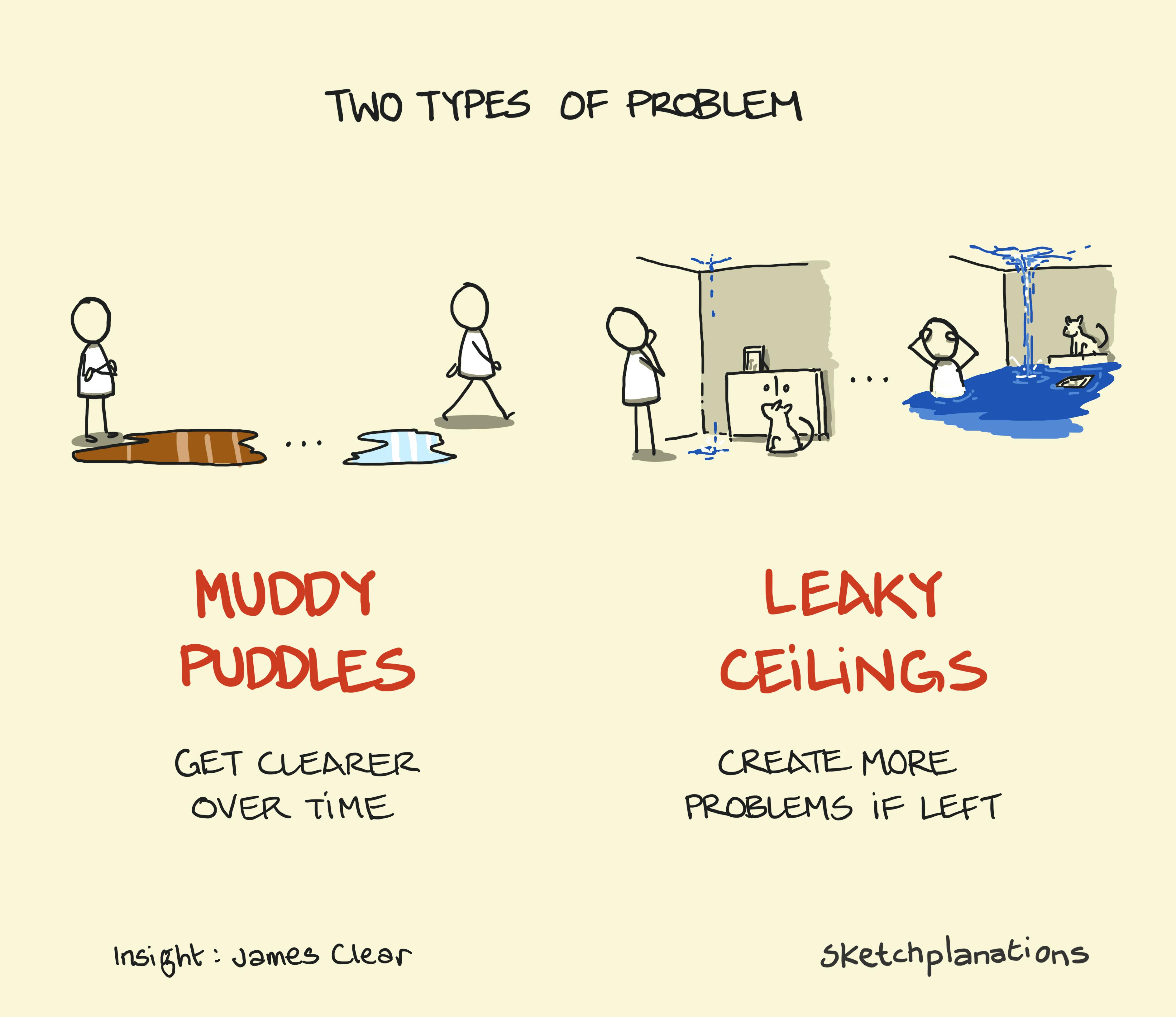
Muddy puddles, leaky ceilings
What type of problem are you dealing with? James Clear shared a technique of splitting problems into two types: muddy puddles or leaky ceilings. A muddy puddle problem is one where leaving it alone can help to make it clearer. A leaky ceiling problem is one where leaving it alone causes more problems. Leaky ceilings need resolving soon. Muddy puddles can be left until they are clearer. Here's James Clear explaining it in his own words: "I split problems into two groups: muddy puddles and leaky ceilings. Some problems are like muddy puddles. The way to clear a muddy puddle is to leave it alone. The more you mess with it, the muddier it becomes. Many of the problems I dream up when I'm overthinking or worrying or ruminating fall into this category. Is life really falling apart or am I just in a sour mood? Is this as hard as I'm making it or do I just need to go workout? Drink some water. Go for a walk. Get some sleep. Go do something else and give the puddle time to turn clear. Other problems are like a leaky ceiling. Ignore a small leak and it will always widen. Relationship tension that goes unaddressed. Overspending that becomes a habit. One missed workout drifting into months of inactivity. Some problems multiply when left unattended. You need to intervene now. Are you dealing with a leak or a puddle?" Also see: lateral thinking sketches, The XY Problem, Point Positive, Solvitur Ambulando…What type of problem are you dealing with? James Clear shared a technique of splitting problems into two types: muddy puddles or leaky ceilings. A muddy puddle problem is one where leaving it alone can help to make it clearer. A leaky ceiling problem is one where leaving it alone causes more problems. Leaky ceilings need resolving soon. Muddy puddles can be left until they are clearer. Here's James Clear explaining it in his own words: "I split problems into two groups: muddy puddles and leaky ceilings. Some problems are like muddy puddles. The way to clear a muddy puddle is to leave it alone. The more you mess with it, the muddier it becomes. Many of the problems I dream up when I'm overthinking or worrying or ruminating fall into this category. Is life really falling apart or am I just in a sour mood? Is this as hard as I'm making it or do I just need to go workout? Drink some water. Go for a walk. Get some sleep. Go do something else and give the puddle time to turn clear. Other problems are like a leaky ceiling. Ignore a small leak and it will always widen. Relationship tension that goes unaddressed. Overspending that becomes a habit. One missed workout drifting into months of inactivity. Some problems multiply when left unattended. You need to intervene now. Are you dealing with a leak or a puddle?" Also see: lateral thinking sketches, The XY Problem, Point Positive, Solvitur AmbulandoWWW…
Read more…





